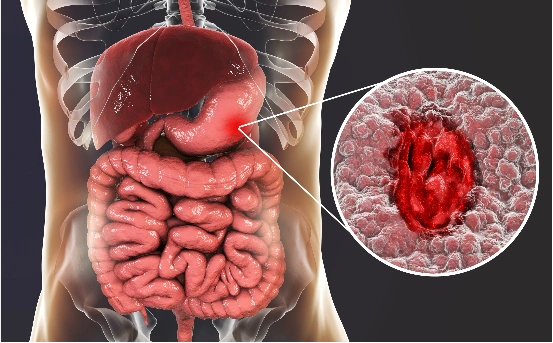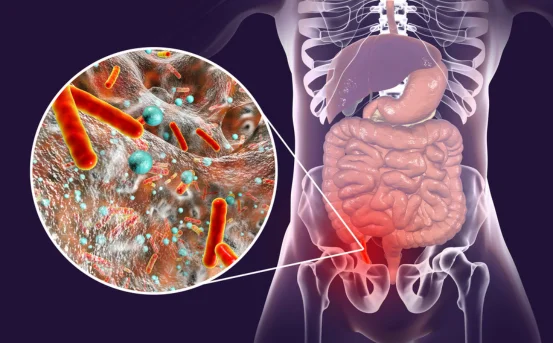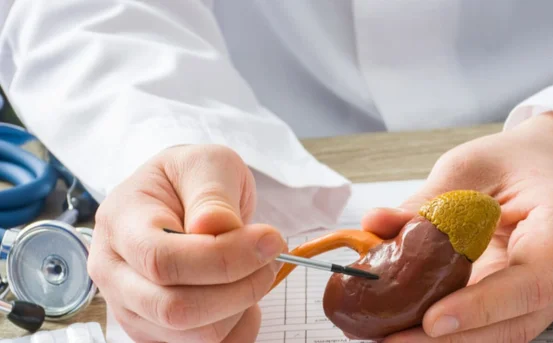What is epigastric hernia repair surgery is a common procedure aimed at correcting a defect in the abdominal wall, specifically in the upper middle region of the stomach. These hernias occur when fat or sometimes intestine pushes through a weak spot between the breastbone and the belly button. While epigastric hernias can be small and painless initially, they may become painful or lead to complications if left untreated.
An epigastric hernia forms when fatty tissue or part of the intestine pushes through a weak spot in the abdominal muscles between the chest and belly button. While many cases begin with mild discomfort or a barely noticeable lump, these hernias can grow over time and lead to complications that affect your quality of life. That’s where epigastric hernia repair surgery comes in a straightforward yet crucial procedure to correct the defect and prevent further health risks.
What is Epigastric Hernia Repair Surgery?
An epigastric hernia is a type of abdominal wall hernia that develops in the epigastric region — the area above the navel and below the breastbone. This condition typically involves the protrusion of fatty tissue or, less commonly, a part of the intestine through a weakened area in the abdominal muscles.
Epigastric hernias can be congenital (present from birth) or develop over time due to excessive strain on the abdominal wall.
Causes of Epigastric Hernia
Epigastric hernias are often caused by increased intra-abdominal pressure or a natural weakness in the abdominal muscles. Common causes include :-
-
Heavy lifting
-
Straining during bowel movements or urination
-
Persistent coughing or sneezing
-
Obesity
-
Pregnancy
-
Genetic predisposition
-
Rapid weight gain or loss
Some individuals are born with a small gap or defect in the abdominal wall, making them more prone to developing hernias.
Symptoms of Epigastric Hernia
Epigastric hernias may present no symptoms in the early stages. However, as the hernia grows, you might experience :-
-
A visible bulge or lump in the upper abdomen
-
Pain or discomfort in the upper stomach, especially when lifting or straining
-
Nausea or vomiting (in severe cases)
-
A burning or aching sensation
-
Tenderness over the hernia site
Pain usually worsens with activity and may improve with rest or lying down.
Diagnosis of Epigastric Hernia
Diagnosis is typically made through :-
-
Physical examination :- Your doctor may feel a bulge in the upper abdomen, especially when you cough or strain.
-
Ultrasound or CT scan :- Imaging tests help confirm the diagnosis and determine the size and contents of the hernia.
Prompt diagnosis is important to prevent complications like strangulation, where blood flow to the herniated tissue is cut off, leading to tissue death.
Why is Epigastric Hernia Repair Surgery Needed?
Surgery is the only definitive treatment for an epigastric hernia. Unlike some other types of hernias, epigastric hernias do not heal on their own.
Left untreated, they may enlarge over time and increase the risk of incarceration (trapped tissue) or strangulation, both of which are surgical emergencies. Surgery is recommended for :-
-
Persistent pain or discomfort
-
Enlarging hernia
-
Risk of strangulation
-
Cosmetic concerns
Types of Epigastric Hernia Repair Surgery
There are two main approaches to epigastric hernia repair :-
Open Hernia Repair Surgery
In this method :-
-
A single incision is made over the hernia site.
-
The herniated tissue is pushed back into place.
-
The muscle wall defect is stitched and reinforced.
-
A synthetic mesh may be placed to prevent recurrence.
Pros :- Cost-effective, usually done under local anesthesia
Cons :- Longer recovery time compared to laparoscopic surgery
Laparoscopic Hernia Repair Surgery
This minimally invasive technique involves :-
-
Small keyhole incisions
-
Use of a laparoscope (a thin camera tube) and specialized instruments
-
Repairing the defect from the inside with sutures and mesh
Pros :- Less post-operative pain, quicker recovery, smaller scars
Cons :- Requires general anesthesia, slightly higher cost
Your surgeon will choose the best technique based on the size of the hernia, your overall health, and any prior surgeries.
Preparing for Epigastric Hernia Surgery
Before surgery, your doctor may advise :-
-
Blood tests and imaging
-
Stopping certain medications (like blood thinners)
-
Fasting for several hours before surgery
-
Avoiding smoking or alcohol intake
Inform your surgeon about any existing health conditions or allergies.
What Happens During the Surgery?
Here’s what to expect :-
-
Anesthesia is administered local, regional, or general depending on the type of surgery.
-
The surgeon makes an incision (open) or small ports (laparoscopic).
-
The hernia sac is identified, and the contents are pushed back into the abdominal cavity.
-
The defect in the abdominal wall is closed with sutures and often reinforced with mesh.
-
Incisions are closed using stitches or surgical glue.
The procedure typically takes 30 to 60 minutes, and patients can often return home the same day.
Recovery After Epigastric Hernia Repair
Hospital Stay :-
-
Most patients are discharged within 24 hours.
-
Laparoscopic patients may go home the same day.
Pain Management :-
-
Mild to moderate discomfort is expected.
-
Painkillers and anti-inflammatory medications are prescribed.
Activity :-
-
Light activity is encouraged within a day or two.
-
Avoid heavy lifting or strenuous exercise for 4 to 6 weeks.
-
Full recovery usually takes 2 to 4 weeks (laparoscopic) or 4 to 6 weeks (open surgery).
Wound Care :-
-
Keep the incision site clean and dry.
-
Follow your surgeon’s instructions for dressing changes.
Diet :-
-
Start with soft foods.
-
Return to normal diet as tolerated unless advised otherwise.
Risks and Complications
Although epigastric hernia repair is generally safe, some potential risks include :-
-
Infection at the incision site
-
Bleeding or bruising
-
Seroma (fluid collection under the skin)
-
Hernia recurrence
-
Injury to internal organs (rare)
-
Reaction to anesthesia
-
Chronic pain at the surgical site
Choosing an experienced surgeon and following post-op instructions minimizes these risks.
When to Seek Medical Help?
Contact your doctor immediately if you experience :-
-
Persistent fever
-
Severe abdominal pain
-
Swelling or redness at the incision site
-
Nausea or vomiting
-
Difficulty passing stool or gas
These may indicate complications such as infection or bowel obstruction.
Conclusion
Epigastric hernia repair surgery is a safe, effective, and often necessary procedure to prevent complications and improve quality of life. With advancements in minimally invasive techniques, recovery is quicker and smoother than ever before.























